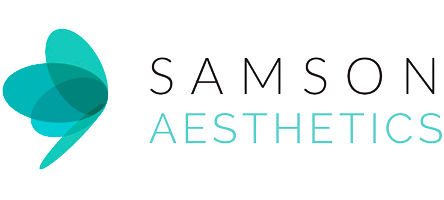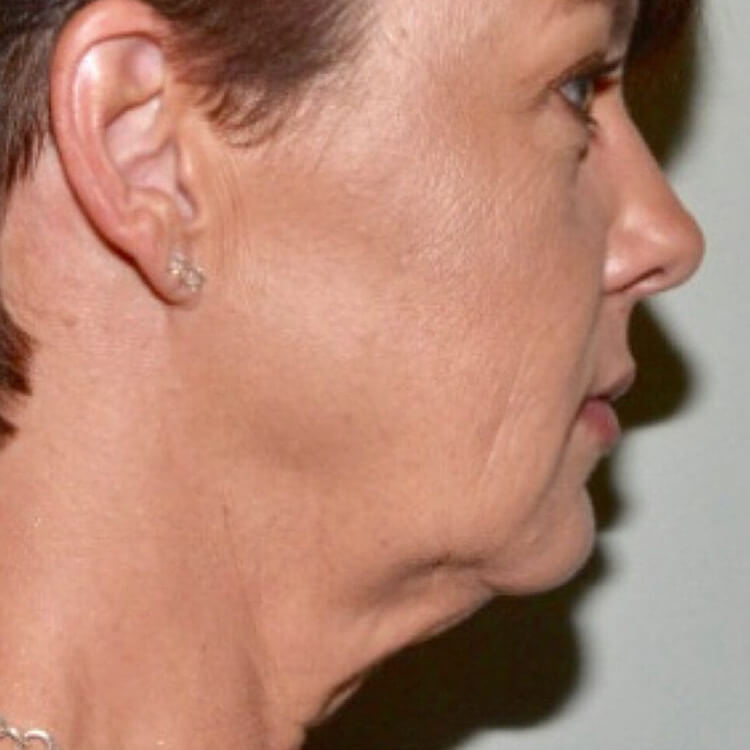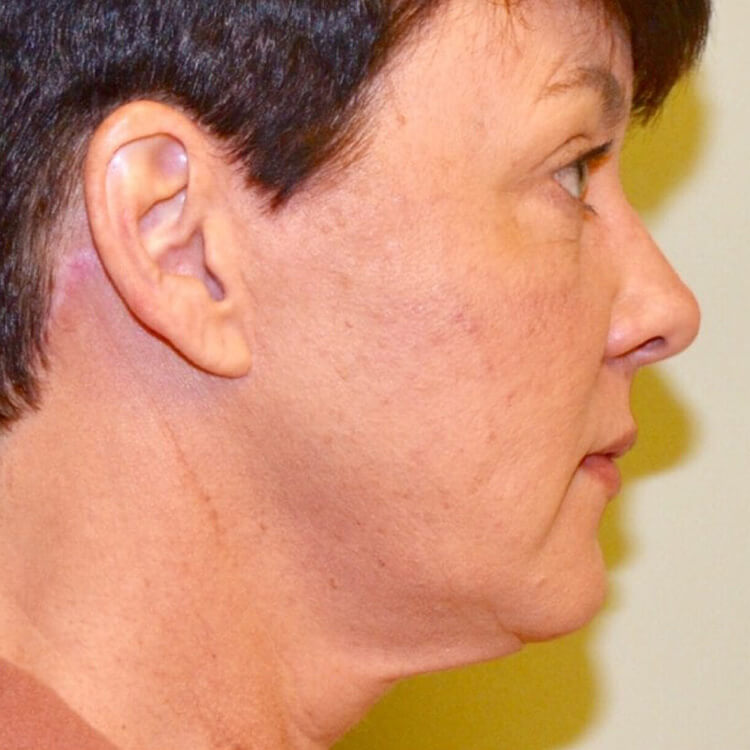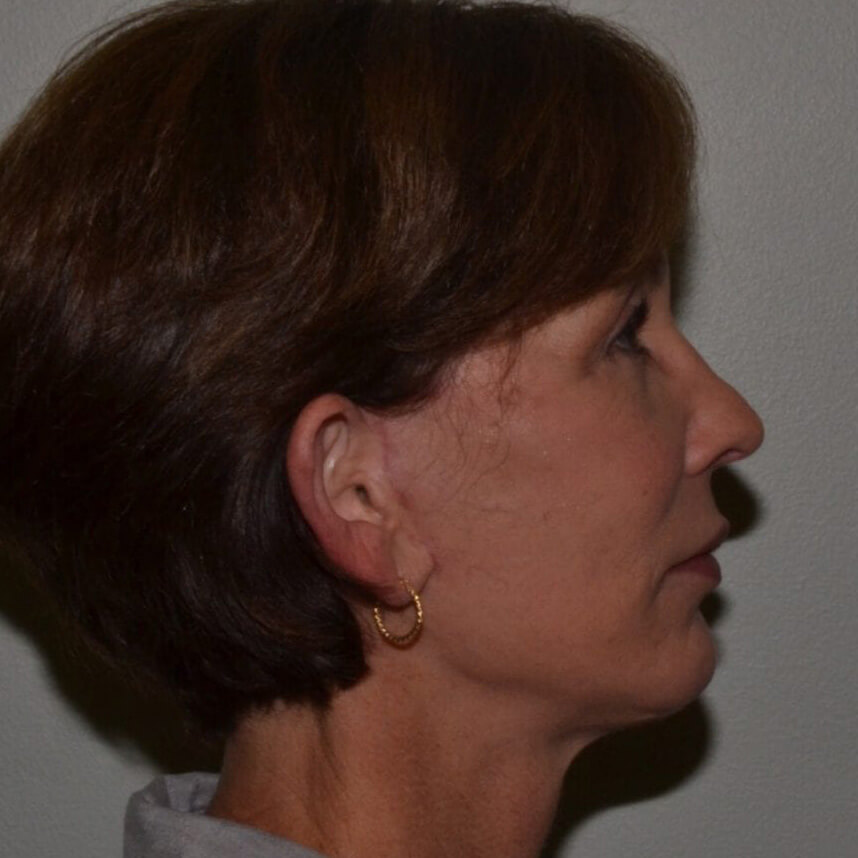Facelift in Daytona Beach, FL

A facelift is the most comprehensive approach to treating facial wrinkles and sagging caused by aging.
A facelift removes excess skin, tightens underlying tissues and muscle and redrapes skin on the face and neck. It can correct midface sagging, marionette lines, jowls and a double chin, maintaining its reputation as the ‘gold standard’ for facial rejuvenation. Dr. Samson routinely performs facelift surgeries not only on patients in the Daytona Beach area, but worldwide patients come to Dr. Samson’s office in Port Orange for their facelift surgery.
 Model
Model

Facelift With Dr. Samson
Dr. Samson, a Board Certified Plastic Surgeon, has been performing Facelifts in Florida for 20 years. Before joining Dr. Larry Slade (now retired) in 2012, Dr. Samson served 14 years at Cleveland Clinic as a Senior Plastic Surgeon and head of the Plastic Surgery Residency Program, training some of the US’s top up and coming Plastic Surgeons. Dr. Samson has a very natural approach to facial plastic surgery, giving his patients ideal outcomes that enable them to look refreshed and rejuvenated. If you are interested in this procedure, schedule your appointment today.
When To Consider a Facelift Surgery:
- If you feel that your face does not reflect your youthful spirit and energy level
- If you determine that your facial sagging and excess skin is a social or career obstacle
- If you show signs of facial aging but still have some skin elasticity
- One day you look in the mirror and realize that time, gravity, sun exposure and heredity have taken a toll and you simply do not look like yourself anymore.
Weighing the Facelift Procedure Options:
Pros
- A facelift surgery can improve many areas of the face in one surgery
- Can last for ten years or more and can make you appear ten to fifteen years younger
- Can recontour the neck and jawline better than all other techniques
Cons
- A facelift surgery will not create a ‘new’ you, just a younger version of yourself
- There will be some downtime associated with this procedure
- Depending on your age and skin type, you may want a secondary procedure later on
These are the top three pros and cons to weigh when considering a facelift. In your one on one consultation with Dr. Samson, you and he can go over together your most desired outcomes for surgery.
 Model
Model

Are you a good candidate for a Facelift?
The following are some common facial characteristics that make you an appropriate candidate for a facelift:
- Sagging skin in your midface and/or jawline
- Deep creases extending from your nose to the corners of your mouth (nasolabial folds)
- Lines extending from each corner of your mouth down your chin (marionette lines)
- Facial fat (volume) that has fallen or is displaced
- Sagging and loss of muscle tone in the lower face, resulting in jowls
- A double chin, resulting from loose skin and excess fatty deposits under the chin and jaw
- Creased and sagging skin in your neck
How will Dr. Samson perform my Facelift?
Facelift techniques can focus on the lower facial areas, such as the jawline, jowls and cheeks, the midface and even the forehead. In some techniques, deeper facial tissues may be repositioned or tightened to restore a more youthful contour. In other techniques, removal or addition of fat or other soft-tissue fillers may be necessary to achieve the best results. Today, many different techniques exist with outcomes that can be consistently reliable, safe, and durable. Your incisions will depend on the area of the face that is targeted and the amount of change you want. It also depends on your own anatomy- and thus is “customized” to be placed along the least conspicuous places, hidden within existing creases or folds. In your consultation with Dr. Samson, you and he will create a detailed plan for what your focus will be.
Once the incisions are made, various degrees of ‘undermining’ of your skin is performed, and the deeper layers of your face (SMAS layers) are lifted. Undermining separates the overlying skin of the face and neck from the muscles and tissues deep to the skin. This frees or loosens facial and neck skin so it can be redraped at the end of the procedure, making sure skin is smooth. Elevating the mobile muscle or “SMAS” layers serves to “lock in” the lift, bringing loose facial tissues back up to stable or fixed layers where they belong, and adding longevity and shape to the lift procedure.
Then, Dr. Samson will raise the skin from the temples, cheeks, and neck, and lift and reposition the underlying connective tissue, removing excess fat and skin. If this procedure is performed in conjunction with a neck lift, Dr. Samson will draw the neck muscles together, stitching them together at the midline to form a strong sling of muscles that supports the entire neck and jaw. Dr. Samson may also include liposuction of the neck and jowls, as requested/needed. Facial implants may be added to increase cheek or chin volume.
Finally, Dr. Samson redrapes the skin over the new underlying structure and closes the incisions with dissolvable stitches. Where needed, drainage tubes may be inserted. A padded, supportive dressing will be applied.
Dr. Samson’s goal is to help you achieve the most beautiful and natural-looking results, and to make your surgical experience as easy and comfortable as possible.

4.9 rating on Google!
Highly rated, referred, and revisited
Our excellent patient satisfaction rate is one of the many things that keeps our patients returning and referring their friends and family to us.
 Model
Model

What will my Facelift incisions and scars be like?
Regardless of the type of facelift you undergo, you will have incisions that involve the skin around your ear.
- The incision line usually runs along the hairline and within the natural contours in front and behind the ears.
- Skin is then pulled back and the incision is closed.
- Dr. Samson will make incisions in your hairline at the temples, continuing down and around the front of your ears and hidden in the natural creases behind your ears in your lower hair-bearing scalp.
- For the neck lift, Dr. Samson will make incisions starting in front of your earlobes and continuing around behind your ears in your lower scalp. There will also be a small incision underneath your chin.
- Facelift scars can be virtually invisible: narrow, flat, and well placed behind the ear so you can wear your hair close-cropped. Dr. Samson will place the incision in areas that are hidden and in areas where the scars look like natural wrinkles. Incision healing depends on surgical technique, infection prevention, reduction of tension, your nutrition, any known or unknown underlying medical conditions, no smoking, and your genetic tendencies.There is a risk of ‘hypertrophic scars’ and ‘keloids’ anytime the skin is cut. This risk is greater in darker-skinned people such as African Americans and Hispanics. Injections of a corticosteroid medication or other treatments, might be used to improve scar appearance.
Facelift Procedure Recovery
After your face lift surgery, a bandage will be applied to minimize swelling and bruising, and a thin drainage tube may be used to remove any excess blood or fluid from under the skin. You will be given specific instructions regarding care for the incisions, medications to take, and when to follow up with Dr. Samson. (usually he will ask you to come in one day post op) Face lift recovery time varies among patients. Most patients see significant results in just a matter of weeks.
Risks
As with any surgical procedure, there are some risks associated with a face lift. These include:
- Bleeding
- Infection
- Poor wound healing
- Facial nerve injury
- Skin loss
- Changes in skin sensation
- Necrosis
- Skin discoloration
Facelift Surgery Cost
The cost of facelift varies depending on the technique used, along with many other factors including the cost of anesthesia, the surgical facility, and any medical tests and prescriptions you may need. Dr. Samson’s staff will give you an accurate cost estimate for your specific needs at the end of your one-on-one consultation.
Commonly Combined Procedures
Many men and women often choose other procedures to be combined with a face lift to complete their look. These include a brow lift, eyelid surgery, and skincare treatments.
If you are interested in any of these procedures, schedule a consultation today by calling (386) 756-9400 or fill out our contact form.
 Model
Model

Preparing for Your Procedure:
How do I prepare for my facelift?
Dr. Samson will provide thorough preoperative instructions, answer any questions you may have, take a detailed medical history and perform a physical exam to determine your fitness for surgery. You may also be required to obtain medical clearance from your personal family physician or internist.Preparation for surgery begins after Dr. Samson examines you and discusses the details of the procedure. If he recommends that you stabilize your weight before surgery or makes other lifestyle suggestions, do your best to follow them to ensure the best results and minimize complications.In advance of your procedure, Dr. Samson will ask you to:
- Stop smoking six weeks before your surgery to promote good wound healing and to reduce scarring. Smoking also increases your risk of serious complications.
- Avoid taking aspirin, nonsteroidal anti-inflammatory medications (NSAIDs: Advil, Motrin, Aleve) and vitamins/homeopathic regimens. These can increase bleeding.
- Regardless of the type of surgery to be performed, hydration is very important before and after surgery for safe recovery.
Most of Dr. Samson’s facelifts are performed conveniently in the Surgery Center of Volusia; a state of the art surgical facility where Dr. Samson’s office is also located. Be sure to arrange for someone to drive you home after surgery and stay with you for the first twenty-four to forty-eight hours.For the easiest recovery period, prepare carefully:
- If you color your hair, you should do it just before surgery or you will need to wait at least a month.
- Stock your refrigerator with lots of fruits and vegetables and lean protein. Lean protein assists in healing. Sodium increases swelling; avoid it! Prepare frozen meals in advance. High protein, low sodium, soft foods are best for the first couple of days.
- Plan where you will recuperate. If you have a recliner chair, it is best for elevating the feet, knees and head. If you do not have a recliner, be sure to have lots of pillows available to prop up your head and knees. If possible, keep your phone and remote control for the T.V. by your bed.
- Decide what you will wear for the first few days; pick items that open in front and do not have to be pulled over your head. The same kind of clothing should be worn on the day of surgery. Wear slip-on shoes.
- Be sure to get plenty of rest and plan on not doing any housework, heavy lifting, or exercise. Avoid hot showers, hot tubs and saunas for two to three weeks.
What can I expect on the day of my facelift surgery?
Facelift surgery requires at least several hours to complete, though more extensive procedures may take longer.
- You will receive medications to keep you comfortable during the surgical procedure.
- Local anesthesia combined with sedation is commonly used during facelift surgery, though general anesthesia can be used instead. An anesthesiologist or nurse anesthetist will be present to administer sedatives (or general anesthetic) and assist in monitoring.
- For your safety during the surgery, various monitors will be used to check your heart, blood pressure, pulse, and the amount of oxygen circulating in your blood.
- Dr. Samson will follow the surgical plan discussed with you before surgery.
- After surgery, you will be taken into a recovery area where you will continue to be closely monitored.
- Your incisions will likely be covered with bulky bandages that provide gentle pressure to minimize swelling and bruising. A small tube might be placed under the skin behind one or both of your ears to drain any excess blood or fluid.
- Before leaving for home on the day of surgery, you or someone looking after you should feel comfortable emptying and resetting the drains. Dr. Samson and the Surgery center staff will go over all post op instructions carefully with you.
- Under no circumstances will you be permitted to go home alone.

Questions for Dr. Samson
If you are interested in these or other cosmetic surgeries in the Daytona Beach, FL area, schedule a consultation by calling (386) 756-9400 or fill out our contact form.
 Model
Model

Aftercare Facelift and Recovery
What will my recovery and healing from a facelift be like?
Dr. Samson will discuss how long it will be before you can return to your normal level of activity and work. After surgery, you and your caregiver will receive detailed instructions about your postsurgical care, including information about:
- Drains, if they have been placed
- Normal symptoms you will experience
- Potential signs of complications.
Immediately after your Facelift Surgery
- You may be placed in a compression garment or wrap immediately after surgery. Wear this exactly as directed. Remove it only as directed for cleansing incisions or showering.
- To minimize swelling, recline rather than lie down. This will be more comfortable for you, and can reduce swelling. Always keep your head elevated. Do not bend forward or over.
- You will have a mild to moderate amount of pain and discomfort. This should be easily controlled with oral medications. If it is not, call Dr. Samson right away.
- The discomfort and pain should begin to decrease within forty-eight hours after surgery. If you have a significant increase in pain after this period, call Dr. Samson Severe pain is rare; if you experience this, call Dr. Samson immediately.
- Expect bruising and swelling. These symptoms will peak within the first thirty-six to forty-eight hours after surgery and will gradually subside over the next ten to fourteen days. To minimize swelling, sleep with your head elevated for a couple of weeks after the surgery.
- It is not unusual to have some slight drainage for the first forty-eight hours. A bulky cotton compression dressing with drains will cover your scalp and face for one to two days to help prevent blood collections under the skin.
Recovery time frame after a Facelift procedure
Follow all postoperative instructions, including information about bandages, drains, taking an antibiotic (if prescribed), and the level of activity that is safe. Dr. Samson will let you know the signs of problems to watch for, such as signs of infection. Recovery time will vary by patient and in relation to the extent of your surgery.The first week
- You may not drive for at least a week after surgery.
- A feeling of tightness in your neck is not unusual after surgery. This sensation is most pronounced in the first one to two days after surgery while the bulky dressing is in place.
- During your first postoperative visit, the bulky dressing and usually the drains will be removed. You may be placed in a supportive elastic face garment that is to be worn according to Dr. Samson’s instructions.
- Do not take any aspirin or any anti-inflammatory compounds for two weeks before and two weeks after your surgery unless you first discuss it with Dr. Samson.
- It is recommended to sleep with your head elevated forty degrees for two weeks; an additional pillow or two under your mattress may help, if necessary.
- Apply cool (not cold) compresses to your eyes. Do not apply ice or anything frozen directly on the skin. Soak soft, white washcloths or gauze squares in ice water and wring out well. Apply directly to the eyes, but not to the cheeks or neck. Do not apply any pressure. Apply cool compresses for no longer than twenty-minute intervals. Do not apply heat.
- Stay up (sitting, standing, walking around) as much as possible after you return home. This helps to decrease facial swelling.
- Avoid bending or lifting heavy things for one week. Besides aggravating swelling, this may raise your blood pressure and encourage bleeding.
- You may wash your hair gently twenty-four hours after your surgery. Do not use the usual heat-type hair dryer; use the cap type or use the cool setting on the blow dryer.
- You may shower or bathe the day after surgery, but do not let the spray directly strike your face. It is permissible to get your suture lines wet, however.
- Report any excessive bleeding that persists after applying pressure for fifteen to twenty minutes.
Two to six weeks
- Don’t go swimming, diving, water skiing, or participate in strenuous athletic activity for at least one month after surgery.
- You can expect to experience some numbness around your ear lobes, face, and neck for several weeks after surgery.
- Refrain from any strenuous exercise and from bending or lifting.
- You may begin sleeping in a modified reclining position, but do not sleep lying flat or on your stomach. If you are a side sleeper, two pillows under your head and a soft pillow under your mid-back and shoulders may offer more comfort.
- Do not wear makeup until you have been told to do so.
- During the first four to six weeks your scars may appear red and be slightly firm and raised then the redness fades and the scar softens. It takes a minimum of one year for the scar to achieve its final appearance.
- Refrain from direct sun exposure. Wear sunglasses and a wide-brimmed hat. If you are outdoors, apply at least an SPF thirty at least thirty minutes before sun exposure. Your face will be highly susceptible to sunburn or the formation of irregular, darkened pigmentation.
Long term
You may ease into your regular fitness routine. However, wear protective eyewear and a hat. Discomfort or tightness and tingling in your face will resolve. Be prepared to wait at least six months for your facelift to completely heal inside and out. It is important to see your doctor as scheduled.










